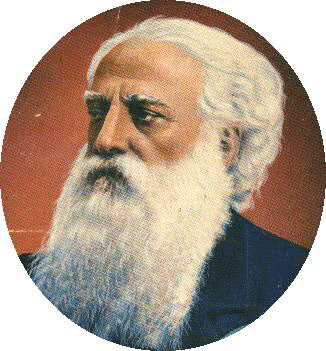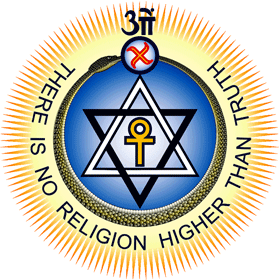February 2007 Newsletter
The following articles are reproduced from the February 2007 Newsletter to members. Non-members may or may not be able to relate to the contents.
New Executive Committee
Our 2006 AGM was held on 30 December 2006. It was attended by 61 members in person, which is more than the required quorum, and 23 through proxies. The following office bearers and members of the new executive committee were elected without contention.
President: Chong Sanne
Vice President: Kam Chai Heng
Secretary: Lily Chong
Asst, Secretary: Tang Kwok Choon
Treasurer: N. C. Raghava
Asst. Treasurer: N. K. Rajarh
Librarian: Nancy Yeo
Asst. Librarian: Choong Tsui Wei
Committee Members:
Vivekhananthan M.
Lee Suit Fun
Djimmy Ong
Choong Chi Pin
Serena M. L. Lee (co-opted)
“Modern science is our best ally. Yet it is generally that same science which is made the weapon to break our heads with.”
A Master of the Wisdom
Occult Chemistry
Extract from the Preface
to ESP of Quarks and Superstrings, 1996
by Stephen M. Phillips, Ph.D.
Despite the triumph of scientific rationalism (indeed, perhaps as a reaction to its success), interest in the paranormal has never been stronger. The world-wide success of the TV series The X Files has stimulated the fascination of the general public in UFOs, ghosts, dreams about the future, psychic healing and a host of other paranormal abilities and phenomena. The waning power of institutional religion to influence what people think has given many permission to believe many ideas once regarded as heretical (e.g. someone may regard himself as a Christian yet believe in reincarnation). Whilst still strongly defended in some quarters, the philosophy of scientism, namely, that everything is scientifically explainable (or else it cannot exist!) has been repudiated by many people with first-hand experience of the paranormal who remain unconvinced by the naive arrogance of some scientists who confidently pronounce that psychic phenomena always have conventional explanations. But in their rush to embrace unorthodox ideas, ‘New Age’ enthusiasts all too often ignore the issue of whether strong, scientific evidence really supports their unconventional beliefs. The result is that the debate about the paranormal has become polarised into two irreconcilable camps, each accusing the other of either gullibility or unreasonable scepticism.
However, real paranormal experience may be to its percipient, such anecdotal evidence of abilities that contradict the scientific view of the brain as the seat of consciousness remains unconvincing to scientists ever aware that chance misobservation or misreporting might have played some part in creating a false impression that the experience was a psychic one. To eliminate these uncertainties, parapsychologists have conducted under controlled, laboratory conditions, numerous double-blind tests of paranormal abilities such as clairvoyance, telepathy and precognition. Successful though some of these experiments have been reported to be, they still have not convinced sceptics, who always seem able to find some methodological flaw in their design which – however trivial and irrelevant – affords them the excuse to reject what, statistically speaking, were highly significant results.
Does this impasse mean that attempts to establish irrefutable proof of paranormal phenomena are doomed to fail – not because the latter do not exist but because there will never be unanimity among scientists over whether such evidence has been provided? Does the reality of paranormal powers of the mind have to remain – like religion or politics – a matter of opinion and unresolved controversy? My book analyses a body of evidence for a psychic ability which is so rare that even most parapsychologists are unfamiliar with it but whose remarkable consistency with scientific facts unknown to anyone at the time can have no other explanation than it was genuine. Recognised in yoga as one of the eight major “siddhis,” or paranormal abilities, that can be acquired by the practice of yoga, it is the faculty to observe microscopic objects beyond the resolution of human eyesight. Over a hundred years ago, the Theosophists Annie Besant and Charles Leadbeater claimed to have used this power to examine the structure of atoms and their constituents. Their book, Occult Chemistry, which compiled the results of their clairvoyant investigations into matter, was ignored for many years by scientists fearful of venturing into occult territory traditionally banned from scientific enquiry. In my book Extra-sensory Perception of Quarks I analysed what Besant and Leadbeater claimed were psychically observed atoms of the first twenty elements in the chemical periodic table in terms of simple facts about their nuclei and what is known about quarks, the particles making up the protons and neutrons inside nuclei. A year earlier, my scientific paper proposing a unified theory of particles and forces other than gravity had been published in the physics journal Physics Letters B. My theory predicted that quarks are not fundamental (as most physicists believe) but are composed of three more basic particles that I called “omegons”. As my analysis of Occult Chemistry implied that Besant and Leadbeater had paranormally observed such “subquarks” as well as quarks themselves, I decided to identify these scientifically undiscovered particles as omegons. But I emphasised in my book that, if my theory of omegons proved wrong, this would not invalidate my explanation of the hundreds of observations of subatomic particles appearing in Occult Chemistry, because my analyses of what Besant and Leadbeater assumed were atoms, did not use any specific property of subquarks predicted by my model, only occasionally and incidentally referring to the electric charges +5/9 and –4/9 (in terms of the charge of an electron) of the two types of omegon my theory predicted to comprise up and down quarks.
Henry Steel Olcott

Col. H. S. Olcott passed away from the physical plane on 17 February 1907 after serving 32 years as the President-Founder of The Theosophical Society. He is remembered for his tireless effort during his lifetime working for the cause of The Theosophical Society at the bidding of his Master and serving the Great Ones. Of him one of the Masters say, “Him, we can trust under all circumstances, and his faithful service is pledged to us come well come ill.”
This year is the centennial anniversary of Colonel Olcott’s death and members of the Theosophical Society from all over the world remember this great man and his work. We commemorate the centenary by publishing this newsletter in his memory.
